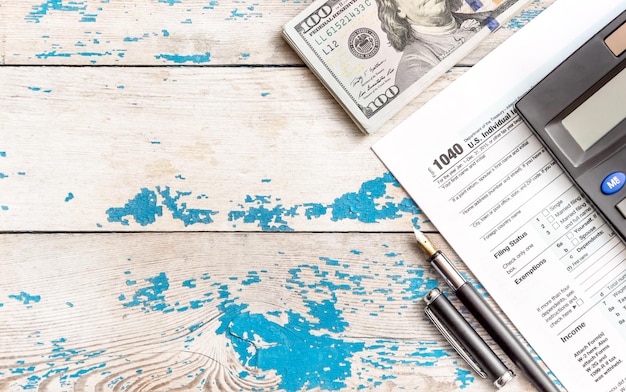Investing in Series I Bonds: Your 2025 Inflation Protection Strategy

Investing in Series I Bonds is a smart personal finance strategy to protect your savings from inflation in 2025, offering a safe and predictable return linked to the Consumer Price Index, making it an essential tool for preserving your purchasing power.
Are you looking for a safe haven for your savings against the backdrop of fluctuating inflation rates? Investing in Series I Bonds: A Personal Finance Strategy for Inflation Protection in 2025 could be the answer. These bonds, offered by the U.S. Department of the Treasury, provide a unique blend of safety and inflation-adjusted returns, making them a compelling option for risk-averse investors.
Understanding Series I Bonds
Series I bonds are a type of U.S. Treasury security designed to protect investors’ savings from inflation. They earn interest based on a combination of a fixed rate, which remains constant for the life of the bond, and an inflation rate, which adjusts twice a year based on changes in the Consumer Price Index (CPI). This makes them particularly attractive during times of rising inflation.
How Series I Bonds Work
The interest rate on Series I bonds is composed of two parts: a fixed rate and an inflation rate. The fixed rate is set when you purchase the bond and remains the same for the life of the bond. The inflation rate, on the other hand, changes every six months based on the CPI. This ensures that your investment keeps pace with inflation, preserving your purchasing power.
Key Features of Series I Bonds
- Inflation Protection: The primary benefit is protection against inflation, as the interest rate adjusts to reflect changes in the CPI.
- Safety: Series I bonds are backed by the full faith and credit of the U.S. government, making them one of the safest investments available.
- Tax Advantages: Interest earned on Series I bonds is exempt from state and local taxes, and federal taxes can be deferred until you cash them in or they stop earning interest after 30 years.
- Accessibility: They can be purchased online through TreasuryDirect, making them easily accessible to most investors.
In summary, Series I bonds offer a unique combination of safety, inflation protection, and tax advantages, making them a valuable addition to any investment portfolio, especially in an environment where inflation is a concern.
Why Consider Series I Bonds in 2025?
In 2025, with economic forecasts predicting continued inflationary pressures, Series I bonds present a strategic opportunity for investors looking to safeguard their wealth. Understanding the current economic climate is crucial in appreciating the value of these bonds.
Economic Outlook for 2025
Economic forecasts for 2025 suggest that inflation will remain a significant concern. Factors such as supply chain disruptions, increased government spending, and rising consumer demand could continue to drive prices higher. In this environment, traditional fixed-income investments may not provide adequate protection against inflation, making Series I bonds a more attractive option.
Protecting Your Purchasing Power
The primary advantage of Series I bonds is their ability to protect your purchasing power. As the inflation rate rises, the interest rate on these bonds adjusts accordingly, ensuring that your investment keeps pace with the increasing cost of goods and services. This can be particularly important for long-term savings goals, such as retirement or education.

Comparing Series I Bonds to Other Investments
- Treasury Bills: While also safe, T-bills don’t offer inflation protection.
- Certificates of Deposit (CDs): CDs provide a fixed rate of return, which may not keep pace with inflation.
- High-Yield Savings Accounts: These accounts may offer competitive interest rates, but they are typically variable and can change frequently.
Considering the economic outlook for 2025, Series I bonds offer a compelling solution for investors seeking to protect their savings from inflation, providing a level of security and inflation-adjusted returns that many other investments cannot match.
How to Purchase Series I Bonds
Purchasing Series I bonds is a straightforward process, primarily conducted online through the TreasuryDirect website. Understanding the steps involved will help you begin investing in these inflation-protected securities.
Setting Up a TreasuryDirect Account
To purchase Series I bonds, you will need to create an account on the TreasuryDirect website. This involves providing your Social Security number, address, and bank account information. The TreasuryDirect platform is the primary way to buy and manage these bonds directly from the U.S. government.
Steps to Buy Series I Bonds Online
Once your TreasuryDirect account is set up, you can purchase Series I bonds by following these steps:
- Log in to your TreasuryDirect account.
- Click on the “BuyDirect” tab.
- Select “Series I” bonds.
- Enter the amount you wish to purchase (in increments of $25).
- Choose your payment method (e.g., bank account).
- Review and confirm your purchase.
Limitations and Considerations
- Purchase Limits: Individuals are limited to purchasing $10,000 in electronic Series I bonds per calendar year. You can also purchase an additional $5,000 in paper Series I bonds using your tax refund.
- Holding Period: You must hold Series I bonds for at least one year. If you cash them in before five years, you will forfeit the previous three months of interest.
- Gift Option: You can purchase Series I bonds as a gift for someone else through TreasuryDirect.
Purchasing Series I bonds is a simple process that can be completed online through TreasuryDirect. Understanding the purchase limits, holding periods, and other considerations will help you make informed investment decisions.
Tax Implications of Series I Bonds
One of the appealing aspects of Series I bonds is their tax advantages. Understanding these tax implications can help you maximize the benefits of investing in these securities.
Federal Tax Benefits
Interest earned on Series I bonds is subject to federal income tax but is exempt from state and local taxes. This can be particularly advantageous for investors who live in states with high income tax rates. You can defer paying federal income tax until you cash in the bonds or they stop earning interest after 30 years, whichever comes first.
State and Local Tax Exemption
The exemption from state and local taxes is a significant benefit of Series I bonds. This can result in substantial tax savings, especially for investors in high-tax states. When calculating your overall investment returns, be sure to factor in this tax advantage.

Using Series I Bonds for Education Expenses
In some cases, you may be able to exclude the interest earned on Series I bonds from your federal income tax if you use the bonds to pay for qualified higher education expenses. To qualify, you must meet certain income requirements and other conditions. This can be a valuable way to save for college while enjoying tax benefits.
- Income Limits: The income limits for the education tax exclusion vary each year.
- Qualified Expenses: Qualified expenses include tuition and fees at eligible educational institutions.
- Redemption Requirements: The bonds must be redeemed in the same year that the education expenses are incurred.
The tax advantages of Series I bonds, including the state and local tax exemption and the potential for an education tax exclusion, make them an attractive investment option for many individuals. Consult with a tax advisor to determine how these benefits apply to your specific financial situation.
Maximizing Your Investment in Series I Bonds
To make the most of your investment in Series I bonds, it’s essential to have a strategic approach. Consider these tips to maximize your returns and achieve your financial goals.
Strategic Timing of Purchases
Timing your purchases of Series I bonds can potentially increase your returns. The inflation rate is adjusted twice a year, in May and November. If you purchase bonds just before these adjustments, you may be able to lock in a higher inflation rate for a longer period.
Reinvesting Interest
The interest earned on Series I bonds is automatically reinvested, allowing your investment to grow over time. This compounding effect can significantly increase your returns, especially over the long term. Consider leaving your interest to accumulate and reinvest itself for maximum growth.
Using Bonds for Long-Term Goals
Series I bonds are well-suited for long-term savings goals, such as retirement, education, or a down payment on a home. Their inflation protection ensures that your savings maintain their purchasing power over time, making them a reliable choice for these important objectives.
- Retirement Savings: Use Series I bonds as a safe and stable component of your retirement portfolio.
- Education Savings: Take advantage of the potential education tax exclusion to save for college.
- Down Payment: Preserve your savings for a home purchase with inflation-protected bonds.
By strategically timing your purchases, reinvesting interest, and using Series I bonds for long-term goals, you can maximize your investment returns and achieve your financial objectives.
Potential Risks and Considerations
While Series I bonds are generally considered a safe investment, it’s important to be aware of the potential risks and considerations before investing.
Inflation Rate Fluctuations
One of the primary risks associated with Series I bonds is the potential for lower inflation rates. If inflation declines, the interest rate on these bonds will also decrease, which could result in lower returns. However, even in a low-inflation environment, Series I bonds still offer a fixed rate of return, providing some level of security.
Liquidity Constraints
Series I bonds have certain liquidity constraints that investors should be aware of. You must hold the bonds for at least one year, and if you cash them in before five years, you will forfeit the previous three months of interest. This can be a drawback for investors who may need access to their funds in the short term.
Opportunity Cost
Another consideration is the opportunity cost of investing in Series I bonds. While they offer inflation protection and safety, their returns may be lower than those of other investments, such as stocks or real estate. Investors should weigh the potential benefits of Series I bonds against the potential returns of other investment options.
- Compare Returns: Evaluate the potential returns of Series I bonds versus other investments.
- Assess Liquidity Needs: Consider your short-term and long-term liquidity needs.
- Diversify Your Portfolio: Diversify your investments to mitigate risk and maximize returns.
While Series I bonds offer significant benefits, including inflation protection and safety, investors should be aware of the potential risks and considerations before investing. Evaluating your financial goals and risk tolerance will help you determine if Series I bonds are the right choice for you.
| Key Point | Brief Description |
|---|---|
| 🛡️ Inflation Protection | Interest rate adjusts with CPI, protecting purchasing power. |
| 🏦 Government Backed | Secured by the full faith and credit of the U.S. government. |
| 💸 Tax Advantages | Exempt from state/local taxes; federal tax can be deferred. |
| 💸 Purchase Limit | Individual limit of $10,000 electronic bonds per year. |
Frequently Asked Questions About Investing in Series I Bonds
▼
Series I bonds are U.S. Treasury securities that protect your savings from inflation. They earn interest based on a fixed rate plus an inflation rate that adjusts twice a year based on the Consumer Price Index (CPI).
▼
You can purchase Series I bonds online through the TreasuryDirect website. You’ll need to create an account and provide your Social Security number, address, and bank account information.
▼
Interest earned on Series I bonds is exempt from state and local taxes and you can defer federal income tax until you cash them in or they stop earning interest after 30 years.
▼
Yes, individuals are limited to purchasing $10,000 in electronic Series I bonds per calendar year. You can also purchase an additional $5,000 in paper bonds using your tax refund.
▼
You must hold Series I bonds for at least one year. If you cash them in before five years, you will forfeit the previous three months of interest, impacting your overall return.
Conclusion
Investing in Series I Bonds: A Personal Finance Strategy for Inflation Protection in 2025 offers a reliable method to safeguard your savings against inflation, combining safety with tax advantages. By understanding how these bonds work, their tax implications, and potential risks, you can make informed decisions to protect and grow your wealth in an uncertain economic environment.





